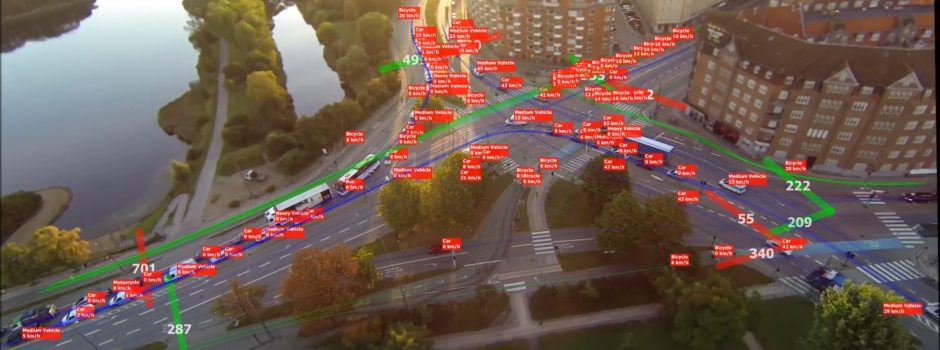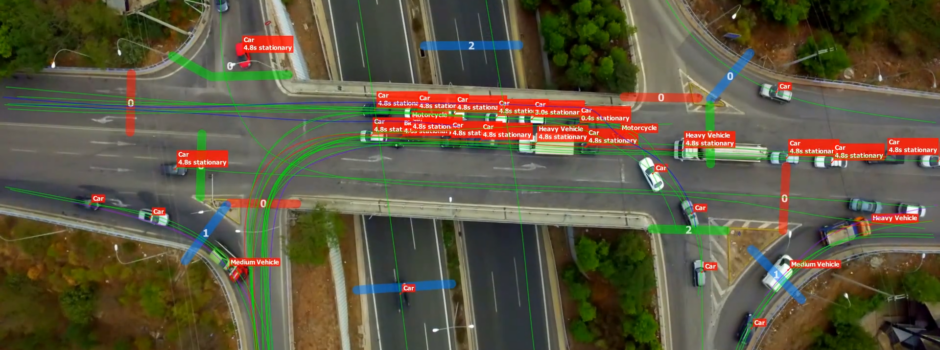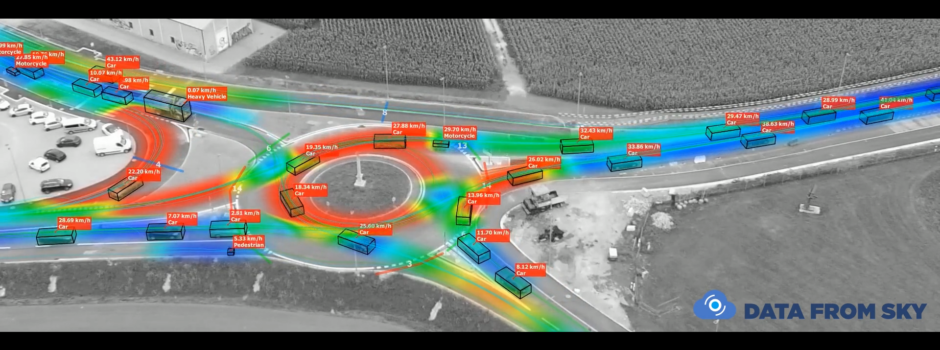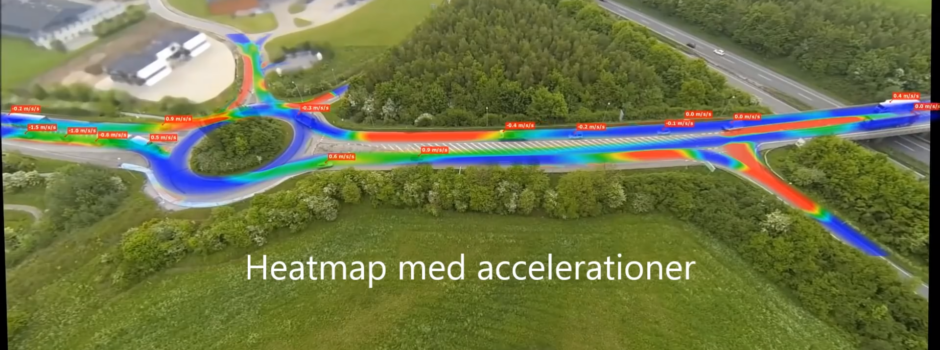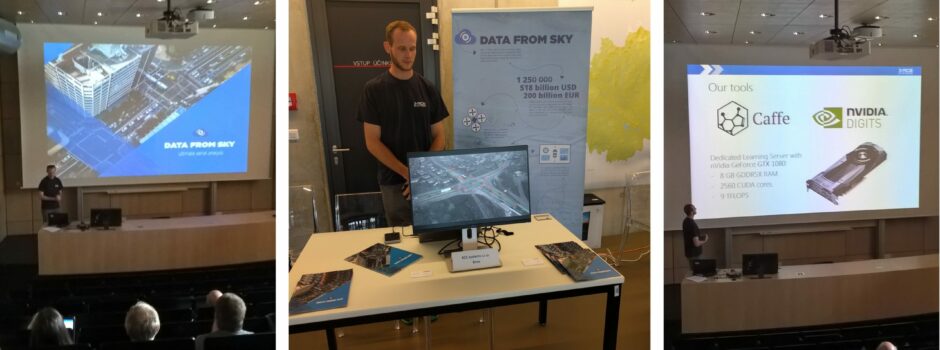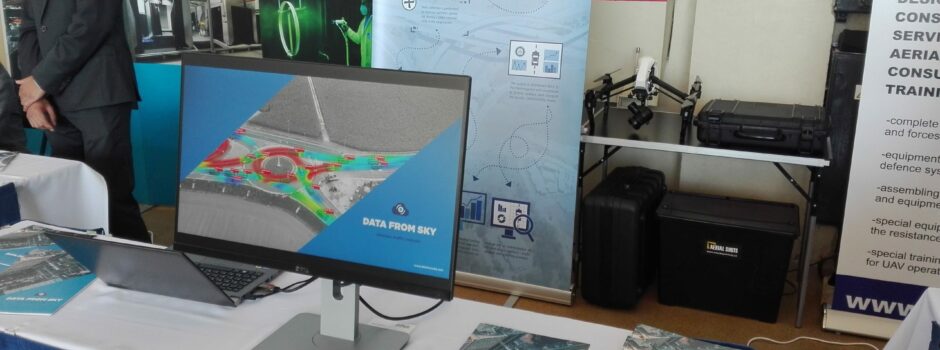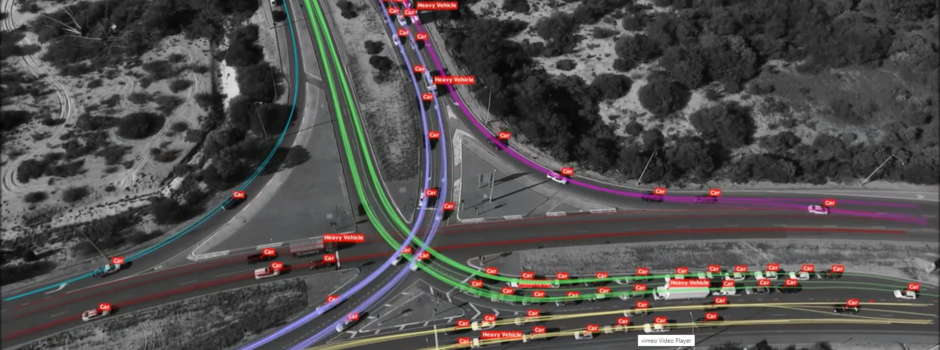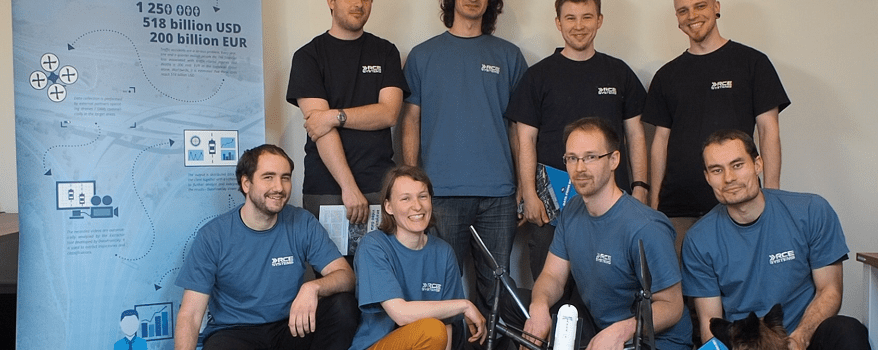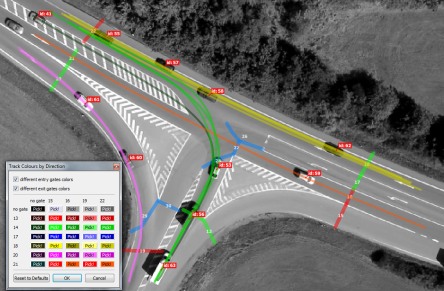DataFromSky in cooperation with COWI is coming with a new traffic analysis from Denmark! As in all other major cities, massive amounts of traffic goes in and out of Copenhagen every day. This leads to congestion and the everlasting discussion on how to effectively move as many people as possible. In Copenhagen, almost 50 percent of all commuting trips are made using bicycles. This results in numerous potential conflicts between bicycles and cars, and the battle for allocating and distributing sheer road surface space between the transport modes is continually on – especially at certain locations, where available space is scarce. One such place is “Christmas Moellers Plads”, an intersection complex connecting inner Copenhagen to the island Amager. Through the use of a specialized UAV and Data From Sky, COWI has obtained a complete 4-hour overview of traffic passing through this complex for both cyclists and motorists – and the interaction between the two. The data extracted now forms the basis for looking into new and better solutions that will keep this people mover perform at its best.
TrafficSurvey – Video post-processing platform



